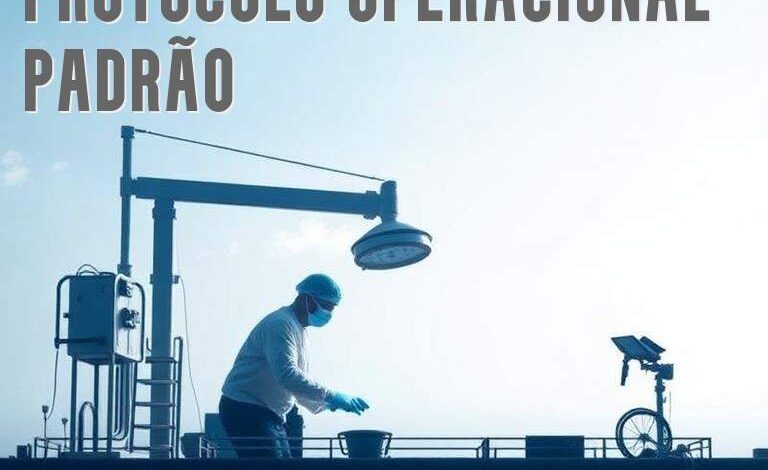Protocolo Operacional Padrão: The Ultimate Guide for 2025

In today’s fast-paced and highly regulated environment, organizations across industries are continuously seeking ways to ensure consistency, efficiency, and safety in their operations. One of the most vital tools to achieve these goals is the Protocolo Operacional Padrão (POP), or Standard Operating Procedure (SOP). As we step into 2025, understanding and implementing an effective Protocolo Operacional Padrão has become more crucial than ever.
This comprehensive guide will explore the latest trends, best practices, and updates related to Protocolo Operacional Padrão in 2025. Whether you are managing a manufacturing plant, healthcare facility, or service organization, mastering the nuances of POP can significantly enhance your operational performance.
What is a Protocolo Operacional Padrão (POP)?
A Protocolo Operacional Padrão (POP) is a documented set of step-by-step instructions that describe how to perform specific tasks within an organization. It serves as a guide to maintain quality, safety, and compliance across various processes. In essence, a POP standardizes procedures to minimize errors, improve efficiency, and ensure consistent outcomes.
In 2025, the importance of a well-designed POP extends beyond simple documentation. It’s now a dynamic tool integrated with digital systems, training modules, and real-time monitoring to adapt to evolving industry standards and technological advancements.
Why Is a Protocolo Operacional Padrão Important in 2025?
The importance of a Protocolo Operacional Padrão in 2025 can be summarized through the following points:
- Ensures Consistency and Quality: Standardized procedures reduce variability, ensuring that products and services meet quality standards consistently.
- Enhances Safety and Compliance: Clear protocols help organizations adhere to legal regulations, industry standards, and safety guidelines, reducing risks and liabilities.
- Facilitates Training and Onboarding: Well-documented POPs make training new staff faster and more effective, ensuring everyone is aligned with organizational practices.
- Supports Digital Transformation: Modern POPs are integrated with digital tools, enabling real-time updates, tracking, and data analysis.
- Improves Efficiency: Streamlined processes lead to reduced waste, faster turnaround times, and better resource utilization.
Latest Trends in Protocolo Operacional Padrão for 2025
As of 2025, several innovative trends are shaping how organizations develop and implement Protocolo Operacional Padrão. Here are some key trends to watch:
1. Digital and Automated POPs
Traditional paper-based POPs are giving way to digital platforms that allow for easy updates, distribution, and compliance tracking. Cloud-based systems enable remote access, real-time edits, and integration with other enterprise tools.
2. AI-Driven Process Optimization
Artificial Intelligence (AI) and Machine Learning (ML) are being used to analyze existing procedures, identify bottlenecks, and suggest improvements. AI can also monitor compliance and alert managers to deviations automatically.
3. Customization for Industry-Specific Needs
In 2025, POPs are increasingly tailored to specific industries such as healthcare, manufacturing, logistics, and hospitality. Industry-specific templates and standards ensure greater relevance and compliance.
4. Focus on Sustainability and Green Operations
Environmental considerations are central to modern POPs. Organizations are creating protocols that minimize waste, reduce energy consumption, and promote eco-friendly practices.
5. Employee-Centric Approach
Training modules embedded within POPs, accessible via mobile devices, promote better understanding and adherence among staff. Interactive multimedia and gamification are used to boost engagement.
How to Develop an Effective Protocolo Operacional Padrão in 2025
Creating an impactful Protocolo Operacional Padrão involves several key steps. Here is a step-by-step guide aligned with current best practices:
1. Conduct a Thorough Process Analysis
Begin by mapping out existing workflows. Use process mapping tools and data collection to understand all steps involved. Identify bottlenecks, risks, and areas for improvement.
2. Engage Stakeholders
Involve employees, managers, and subject matter experts to gather insights and ensure the protocol reflects real-world practices. Stakeholder engagement enhances buy-in and compliance.
3. Define Clear Objectives and Scope
Specify what the POP aims to achieve—be it quality, safety, speed, or compliance—and delineate its scope. Clear objectives guide the development process.
4. Draft Detailed Procedures
Write step-by-step instructions, including safety precautions, responsible personnel, required tools, and expected outcomes. Use simple language and visuals for clarity.
5. Incorporate Technology and Digital Tools
Leverage digital platforms to create interactive, accessible POPs. Use multimedia, videos, and quizzes to enhance understanding.
6. Validate and Pilot
Test the POP in a controlled environment. Collect feedback, identify gaps, and make necessary adjustments before full deployment.
7. Train and Communicate
Implement comprehensive training programs to ensure staff understand and can execute the procedures confidently. Use multiple channels—workshops, e-learning, mobile apps.
8. Monitor and Update Regularly
Use digital monitoring tools to track adherence and performance. Continuously review and update the POP to reflect technological changes, regulatory updates, and operational feedback.
Best Practices for Implementing a Protocolo Operacional Padrão in 2025
Implementing a POP effectively requires strategic planning and ongoing management. Here are some best practices:
- Prioritize Simplicity and Clarity: Avoid overly complex language or procedures. Clear instructions reduce errors.
- Utilize Technology: Implement digital platforms for easy access, updates, and compliance tracking.
- Foster a Culture of Compliance: Encourage staff to follow protocols diligently through training, recognition, and accountability.
- Regular Audits and Feedback: Conduct periodic audits and solicit feedback to identify areas for improvement.
- Align with Industry Standards: Ensure your POP aligns with ISO standards, local regulations, and best practices specific to your sector.
- Integrate with Quality Management Systems: Embed POPs into broader quality frameworks like ISO 9001 for comprehensive management.
Challenges and Solutions in Developing and Maintaining POPs in 2025
Despite the benefits, organizations face challenges when developing and maintaining effective POPs:
1. Resistance to Change
Employees may resist new procedures. Solution: Engage staff early, provide thorough training, and communicate benefits clearly.
2. Keeping Documents Up-to-Date
Rapid technological and regulatory changes can render POPs obsolete quickly. Solution: Use digital platforms for real-time updates and version control.
3. Ensuring Compliance Across All Levels
Inconsistent adherence can compromise the entire system. Solution: Implement monitoring tools and accountability measures.
4. Integrating Technology
Adopting new digital tools can be complex. Solution: Provide comprehensive training and choose user-friendly platforms.
The Future of Protocolo Operacional Padrão: What to Expect Post-2025?
Looking beyond 2025, the evolution of Protocolo Operacional Padrão is likely to be driven by emerging technologies:
- Advanced AI and Automation: Fully automated procedures with AI oversight.
- Blockchain for Traceability: Immutable records of protocol compliance.
- IoT Integration: Real-time data from connected devices embedded within protocols.
- Personalized Protocols: Custom procedures tailored to individual roles or departments.
Organizations that embrace these innovations will position themselves at the forefront of operational excellence.
Conclusion
The Protocolo Operacional Padrão remains a cornerstone of effective organizational management in 2025. By standardizing procedures, leveraging new technologies, and fostering a culture of continuous improvement, organizations can achieve higher quality, safety, and operational efficiency.
Whether you are just starting to develop your POP or looking to modernize existing protocols, understanding the latest trends and best practices is essential. Remember, a well-crafted and maintained POP not only ensures compliance but also empowers your team to perform at their best.



